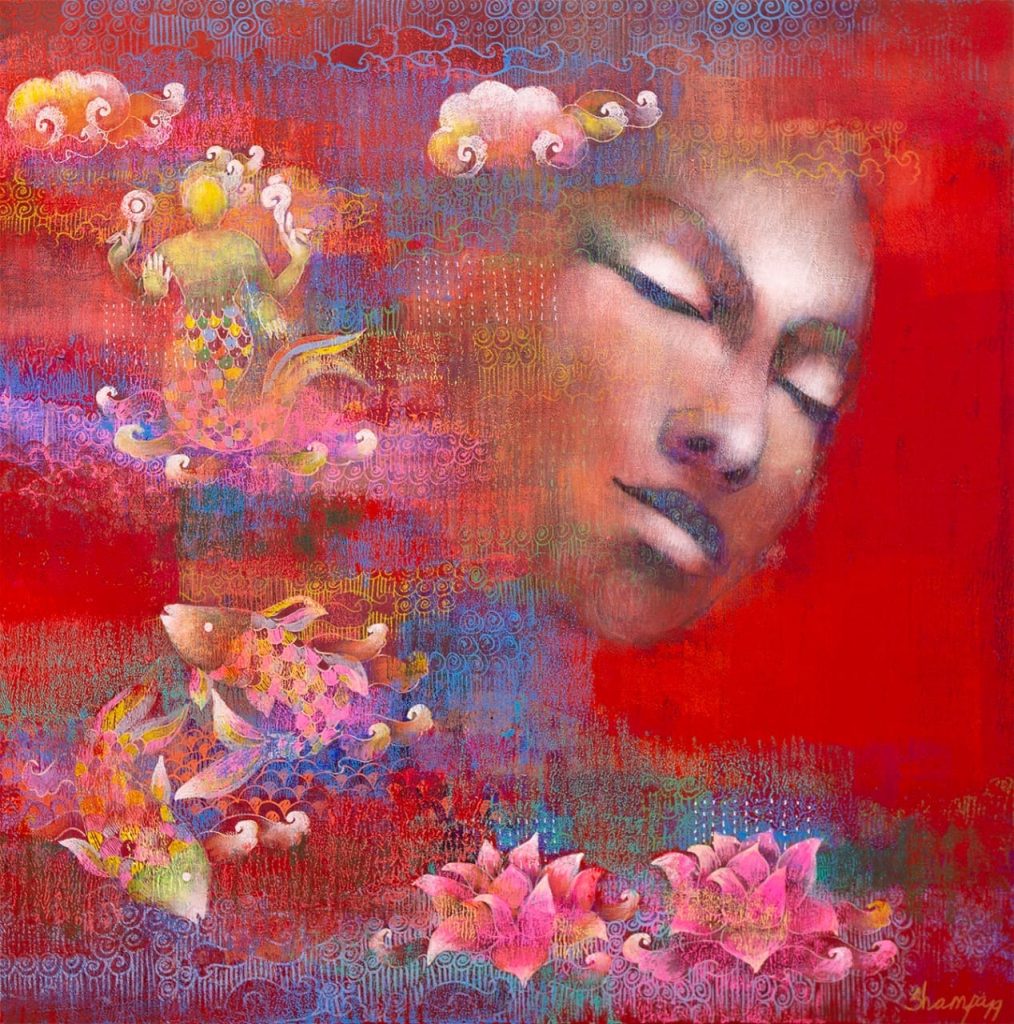It is an ongoing argument that some of the best art is born of adversity—where growing old is often seen as one of the unavoidable adversities faced by the human species. Yet some of the best work has come from the great Masters when they were in their 60s, 70s and sometimes even their 80s. Whether it was A. Turner lay dying and asked to see the light for one last artwork, which later became one of the most valued paintings or it was a V S Gaitonde who locked himself in the solitude of his studio to produce some of the most valued artworks of Indian Modern Art. Or for that matter, Monet’s Water Lilies series was deemed ‘artistic suicide’, by his peers but it was a symptom of cataracts and advanced age, and his astigmatism that lent him this unique vision, and Rabindranath Tagore’s poetic doodles that led to his unique artwork at aged 63.

Courtesy – Engendered
In a similar vein, curator Myna Mukherjee brings the artwork of SK Sahni, spanning five decades to the exhibition Set Adrift on Memory Bliss: Meditations on the Age of Creativity, Art and Memory. Furthermore, the exhibition brings together seven influential artistic practices, that encounter geometric abstractionist SK Sahni’s prolific body of work.

Brought to the gallery by Engendered in Association with India International Centre; the exhibition explores abstraction as both a historical idea and a constantly emergent artistic practice, using the fulcrum of an intergenerational interventionist exhibition. “The exhibition works towards a broad cross-disciplinary examination of abstraction’s inherent radicalism, its oppositional and critical possibilities around creativity, the queerness of time and the marginalities of ‘age’,” says Mukherjee. The artists featured in the exhibition are Shobha Broota, Puneet Kaushik, Reshmi Dey, Anumeha Jain, Harshit Agrawal, Adil Kalim, Indranil Garai & Associates in dialogue with SK Sahni.
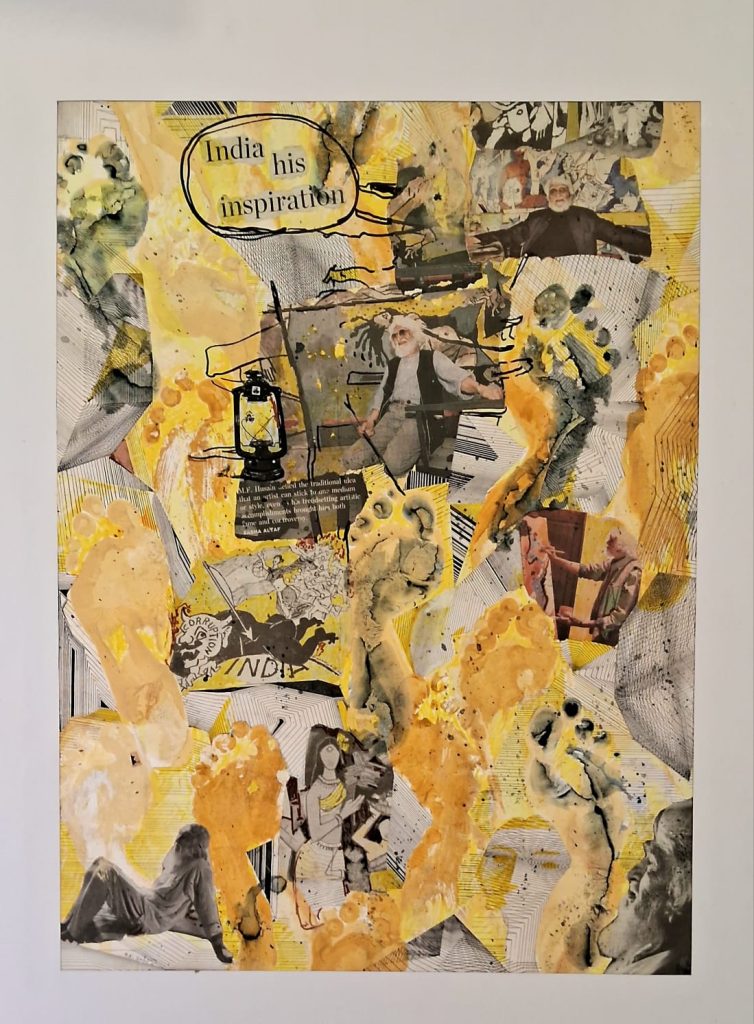
“The exhibition intersects works that vary in their force and aesthetic complexity, their heterogeneity, even incoherence, but together embrace a radical contemporary moment in the present that allows for a more nuanced reading of abstraction in both form and philosophy” says Mukherjee. The exhibition mirrors the roots of an ideology, “The shift from iconography to abstraction marks a resistance to a contemporary assimilations politics cantered on legibility. Thus the limitlessness of abstraction is as queer as postmodernism,” she adds.
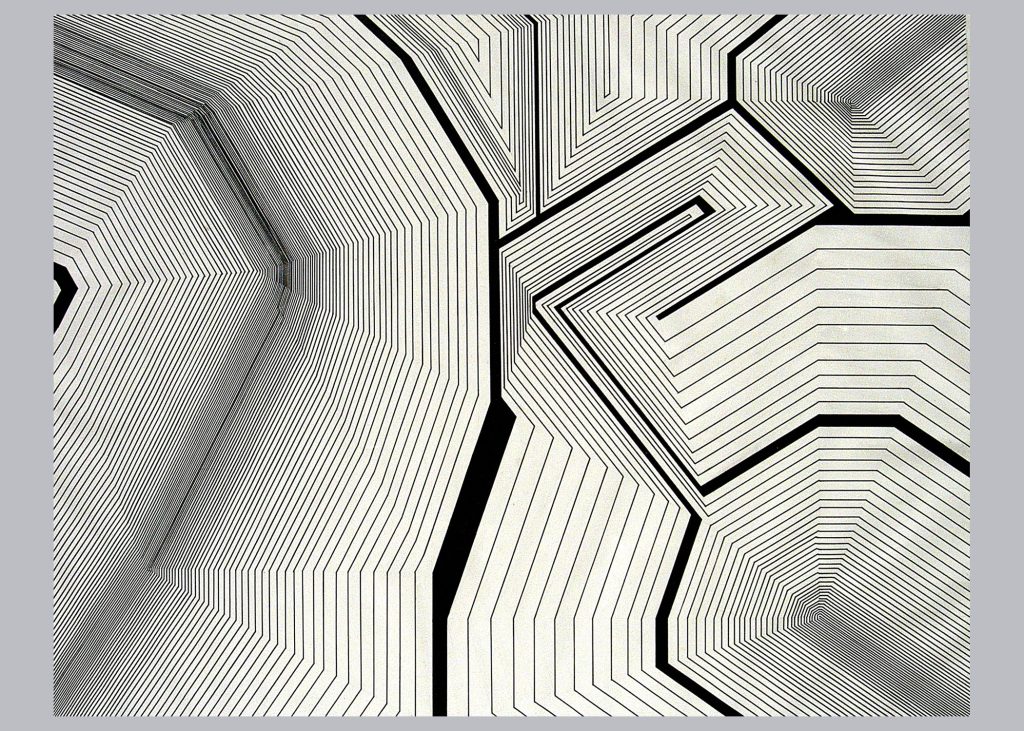
Courtesy – Engendered
Proponents of abstraction will understand it as a method to explore questions of “embodiment, time and materiality without resorting to an established, and perhaps reified iconography.” Often the artist in representation is inescapably ‘culturally marked’. Abstraction is one tactic for refusing the power of this marking and for resisting the visual taxonomies through which people are recognised and regulated.
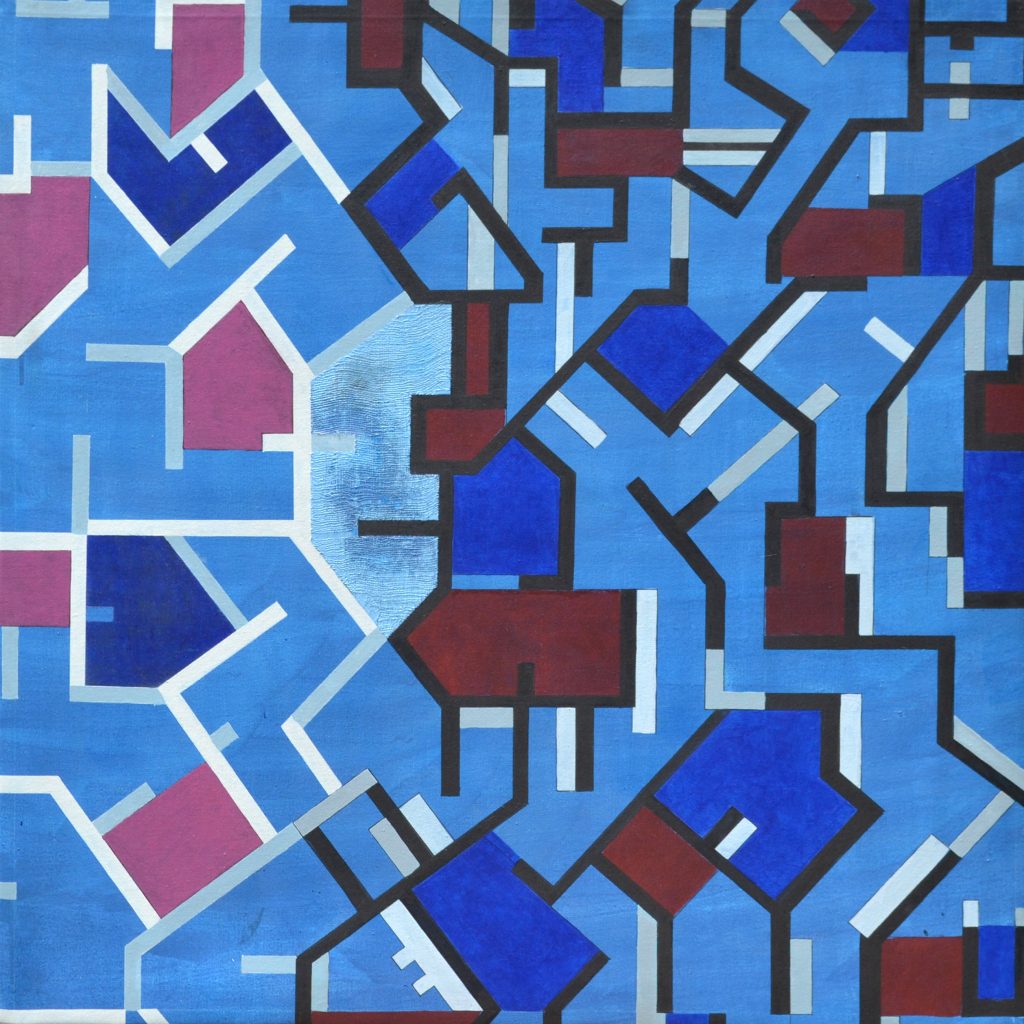
Courtesy – Engendered
SK Sahni is a Diaspora artist working prolifically at 87, diagnosed with Parkinson’s and Cancer, and he lends both his body of work and himself as the artist remarkably to abstraction by breaking all stereotypes of productivity and age. He emerges every day to his studio and creates art with the passion of a dreamer. A significant amount of work in the show is new and created in the past two years after his diagnosis of Parkinson’s and gradual dementia.
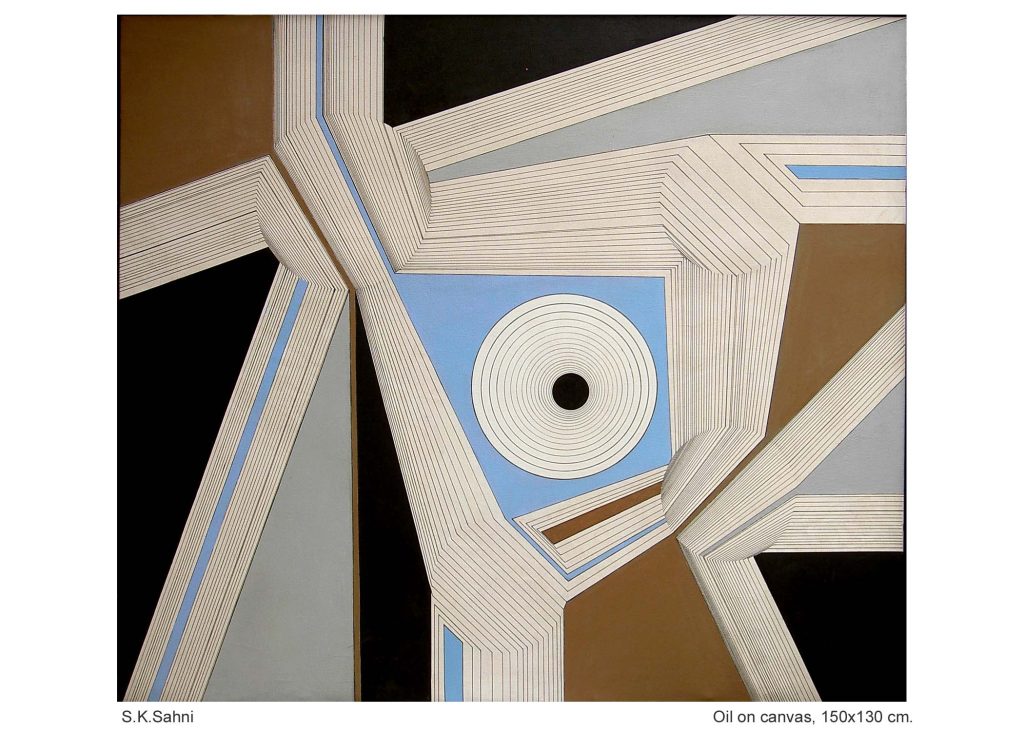
Courtesy – Engendered
About his art, as Roobina Karode writes in an essay on his work “He has spent more than five decades of his life, chasing the line as his constructive tool to create his world of geometric abstractions. One is aware that a straight line does not exist in nature. It is an abstraction, something invented by humans as a tool for measure, delineation, rendition and expression,” writes Karode, adding, “For Sahni, it is an extraordinary tool to envision the beauty of form and structure by defying the conventional sense of the picture plane, with a single vantage and vanishing point and the line of the horizon.”
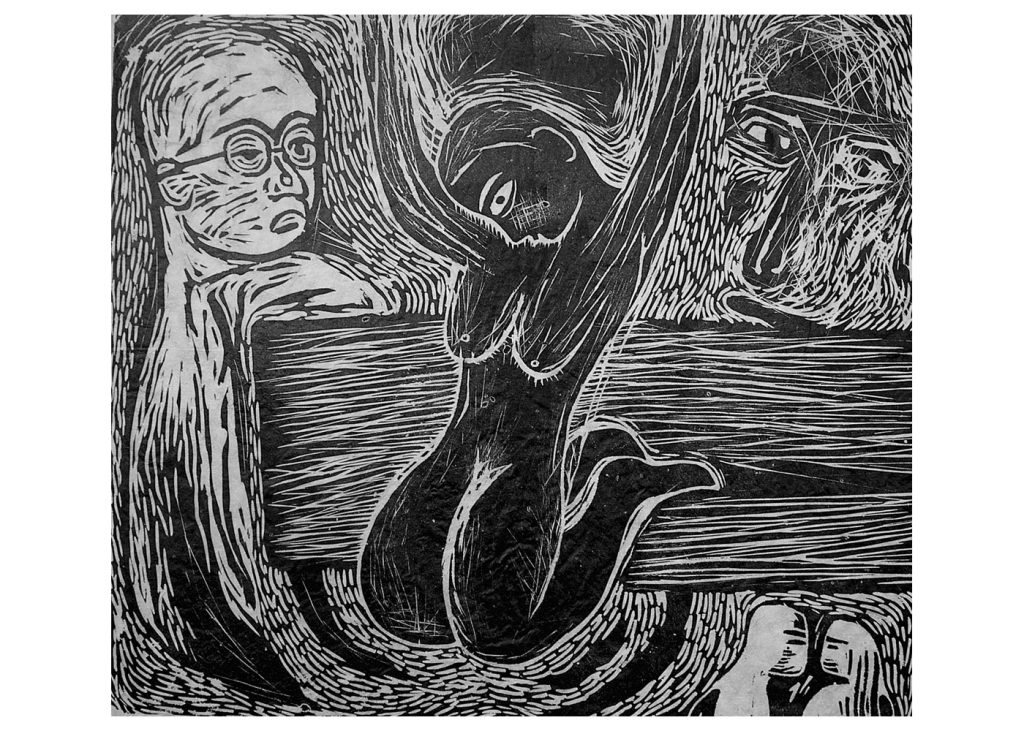
Lino cut on rice paper
15X13.2cm
Courtesy – Engendered
An artist like Sahani has followed different styles and mediums over his long career, working as a printmaker and figurative artist in the first half of his career and then turning to abstraction and minimalism. Having started out as a figurative painter after having studied at the JJ School of Arts in Mumbai, he soon moved to drawing biomorphic forms, playing with the spontaneity of the hand and the informality of organic lines and eventually moved to what he is most known for minimal linear abstractions in space with the precision of architectural draftsmanship and sublimation of tantric geometry. His work is in the National Gallery of Modern Art, the Museum of Geometry in Dallas (USA), private collections and several corporate acquisitions both in the East and the West.

ACRYLIC ON CANVAS
24X24IN
Courtesy – Engendered
The role of the participating artists in the exhibition, ‘Set Adrift on Memory Bliss: Meditations on the Age of Creativity, Art, and Memory,’ is to engage in a dialogue with SK Sahni’s prolific body of work, presenting a cross-disciplinary examination of abstraction. The selection of artists is deliberately done to showcase the different philosophical foundations traversing a broad range of mediums and materials—including paintings, drawings, prints, glass-blown sculptures, AI explorations, queerness, site-specific installations, recordings, music & even food art. Each artist brings their unique perspective, medium, and artistic practice, contributing to the overall exploration of abstraction as both a historical idea and an emergent artistic practice. Here is a brief overview of their roles and contributions:
Shobha Broota (born 1943): Known for her ‘woven paintings,’ Broota stretches knitted wool over canvas, creating patterns that explore colour and texture. Her work is meditative, reflecting her belief in approaching art with a clear mind. She uses materials like thread and wool to delve into self-exploration.
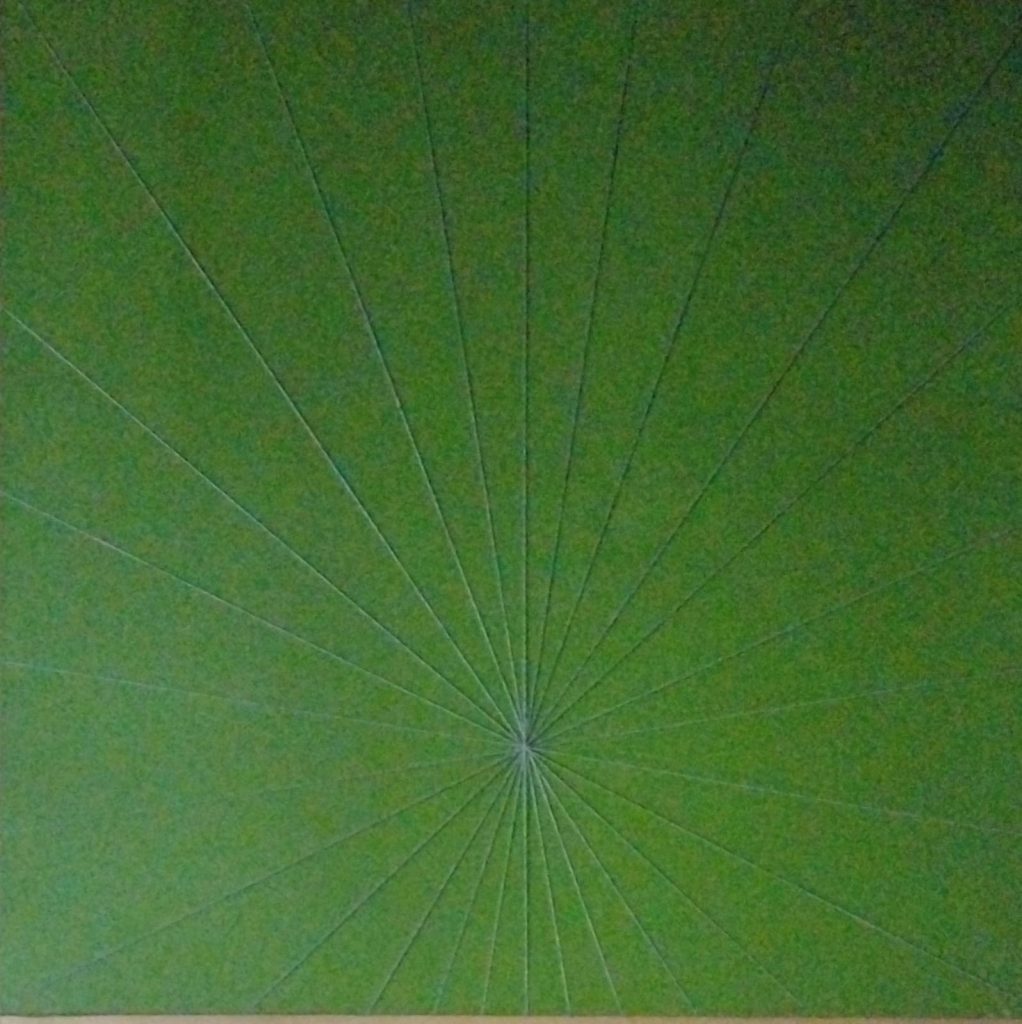
Puneet Kaushik (born 1972): Kaushik’s art is deeply personal, influenced by folk and tribal art, and incorporates handmade paper, wire, fabric, and weaving. His work, often featuring the colour red, explores the human body and larger existential themes through minimal forms and linearity, balancing light and shadow, and inner and outer self.

Reshmi Dey (born 1975): Initially a teacher, Dey transitioned to glass art, training in the UK. Her work in glass art explores biomorphic forms, combining physical and emotional qualities, and aligns with Sahani’s biomorphic themes.
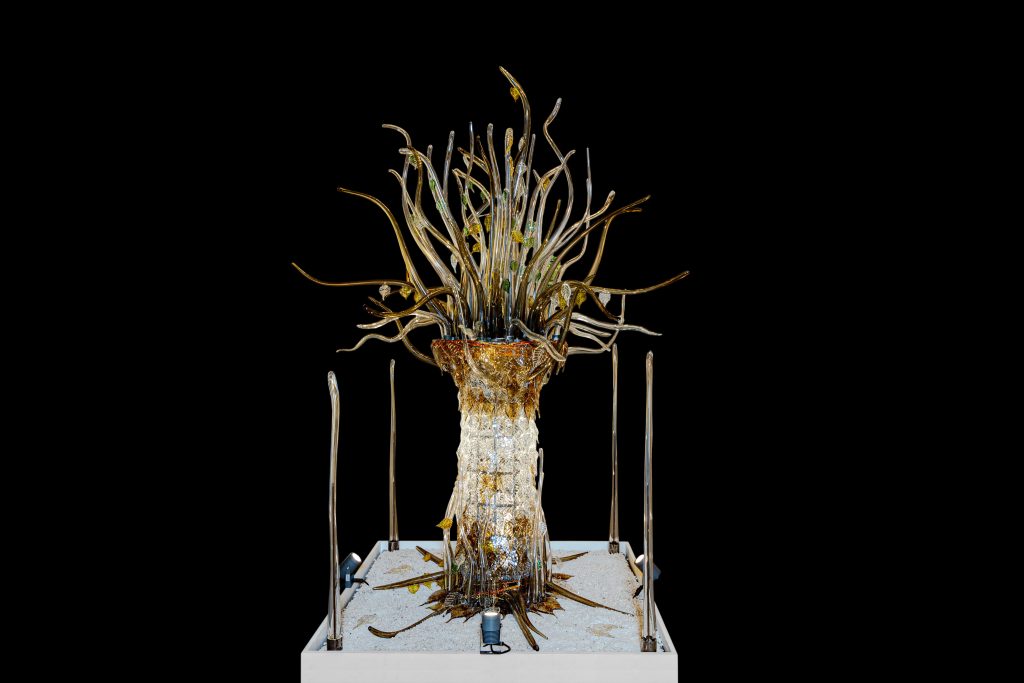
Indranil Garai (born 1977): As a cross-disciplinary artist and entrepreneur, Garai creates public sculptures that blend art and design. His geometric and precise forms are minimal yet illusionistic, connecting with Sahani’s recent work.
Anumeha Jain (born 1982): Jain’s abstract art draws inspiration from the universe’s colours and movements, exploring the coexistence of life and death. Her work parallels Sahani’s exploration of energy and form through colour and formlessness.
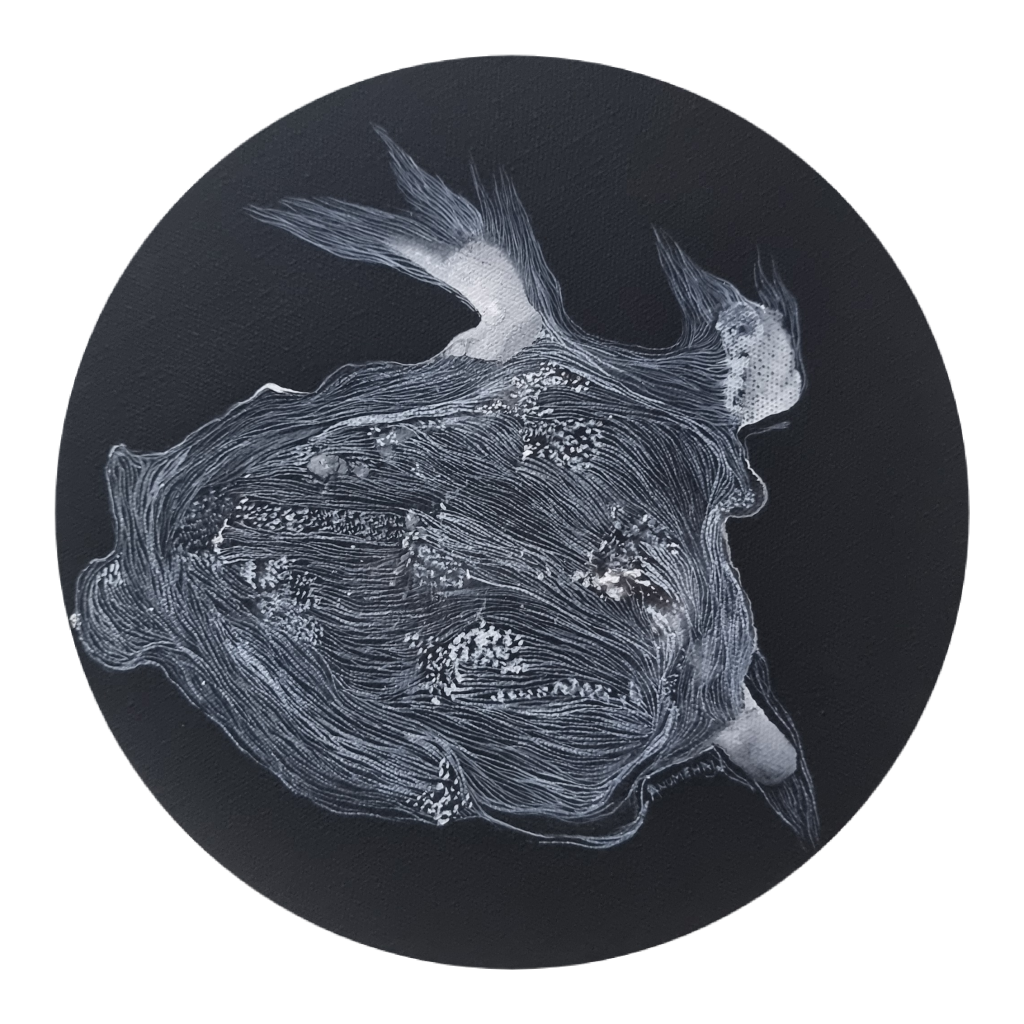
Harshit Agarwal (born 1992): Working with artificial intelligence, Agarwal explores the interplay between human and machine creativity. His recent work juxtaposes iconic Indian and Western abstract artists, using AI to comment on abstraction in art.
Adil Kalim: Kalim’s work challenges the conventions of queer art within abstract expressionism. As a queer Muslim artist, he seeks a nuanced conversation about form, emphasizing the depth and complexity of queer aesthetics.

There will be a series of events during the course of the exhibition including a chef’s table on food and abstraction, presented by the first Indian/South Asian woman Michelin-awarded chef Surbhi Sahni.
The exhibition opens at IIC on June 6, 2024, and is on till June 18, 2024.
Image Courtesy – Engendered

Georgina is an independent critic-curator with 18 years of experience in the field of Indian art and culture. She blurs the lines of documentation, theory and praxis by involving herself in visual art projects. Besides writing on immersive art for STIRworld, she is a regular contributor for The Hindu, MASH Mag and Architectural Digest.




